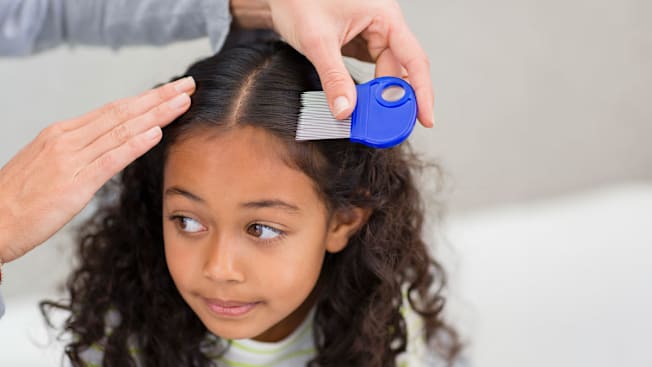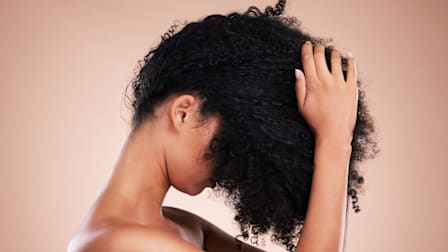4 Things People Get Wrong About Head Lice
What you really need to know about how these pests spread, the risks they pose, and how to treat them

In recent weeks, you may have seen news stories and social media posts claiming that the Centers for Disease Control and Prevention has newly updated its recommendations on handling head lice in school settings. The articles say that the agency newly advises against sending kids home if they’re found to have lice during the school day.
But while this is indeed the CDC’s advice, it’s not true that it’s new—in fact, the CDC and other public health groups, including the American Academy of Pediatrics (AAP) and the National Association of School Nurses (NASN), have been giving this very advice for many years.
That’s because although these tiny, scalp-loving pests can cause plenty of irritation, itchiness, and concern, a lice infestation isn’t a cause for panic.
Myth: Kids Pick Up Lice Mainly at School
The truth: Although lice can be transmitted at school, kids can also "catch" them in a number of other places, including sleepovers, playgrounds, sporting activities, and camp.
And according to Dawn H. Gouge, PhD, a public health entomologist at the University of Arizona, the idea that school is the primary place for lice infestation has led many schools to implement "no nit" policies. These require children to be sent home from school or kept out of school if nits (lice eggs) are discovered on their scalps.
But such policies have several flaws, according to the CDC. It’s easy to mistake dandruff or debris for nits in hair. Plus, nits don’t move and, in fact, are affixed to hair shafts with a cementlike substance that makes it unlikely they can be transferred from one person to another. And there’s no evidence that banning kids with nits from the classroom is useful. The National Association of School Nurses says that classroom or schoolwide nit checks aren’t effective at preventing incidences of lice in schools.
“Head lice is not a health issue and certainly not an emergency,” says NASN president-elect Lynn Nelson, MSN. “We want kids in their classrooms, not missing learning time for something that can easily be treated after school. Students should be treated at home, and return to school the following day.”
Other experts agree. Keeping kids with nits (or lice) out of school has "absolutely no benefit to anybody," Gouge says. And the American Academy of Pediatrics says that "a child or adolescent should not be restricted from school attendance because of head lice, given the low contagion within classrooms."
The cost of missed school far outweighs any risks of head lice, according to the CDC and the NASN.
Myth: Lice Prefer Dirty Hair
The truth: Contrary to popular opinion, having lice doesn’t signify poor hygiene. In fact, lice are just as apt to make a home in freshly shampooed hair as they are in locks that could use a washing.
"They don’t care at all," says Gouge. "They love warm little noggins."
Myth: Lice Spread by Jumping or Flying
The truth: Lice, which are wingless, don’t jump or fly. They don’t hop from place to place, either. They can crawl, however, and very quickly, because their legs are very well adapted for crawling. And once they crawl onto a child’s head, they tend to hang on tightly, thanks to the hooklike claws they have at the end of their legs.
So how do they get from head to head? By crawling from one head to another, via direct head-to-head contact between two people.
Though it’s theoretically possible to pick up a louse from a public place, such as a movie theater seat, it would be highly unlikely. That’s because lice live on human heads, and they need to feed every 4 to 6 hours. Adults can survive for only about a day if they fall off. (They don’t live on pets, either—only people.)
In fact, it’s pretty unlikely that lice will be transmitted from person to person without direct head-to-head contact, Gouge says.
Even the sharing of helmets, clothes, pillows, and hairbrushes probably rarely leads to lice transmission, according to the CDC. The risk is greater, however, when these types of items are used by more than one child in quick succession, Gouge says. And if someone in your household does have lice, it’s a good idea to launder their bedding and clothes and to clean hair-care items as a precaution, according to the AAP.
Myth: Pesticides Must Be Used to Kill Lice
The truth: Several pesticide-based treatments are available, either over the counter or by prescription. But these may not always be the best choice.
Sometimes called "super lice," many of the pests in the U.S. and other parts of the world have developed resistance to over-the-counter lice treatments that contain certain pesticides, notably permethrin and pyrethrins. In a 2016 study on this topic, scientists found that 98 percent of the lice they evaluated—collected from 138 sites in 48 states—had a gene mutation indicating possible pesticide resistance. The researchers say that while the mutation doesn’t guarantee that an OTC lice product with permethrin or pyrethrins will fail, it does reduce the chances treatment will succeed.
Other pesticide products, such as malathion (Ovide and generic), carry risks. It’s flammable, and it can cause stinging and burns. CR’s experts recommend against using products containing the active ingredients malathion and lindane.
There are effective alternatives to pesticide-based products. Consumer Reports’ scientists have long advocated the use of wet-combing: coating your child’s head with conditioner or oil and combing out lice and nits with a fine-tooth metal nit comb. The AAP also recommends this method for parents who prefer not to use one of the available lice pesticides, or whose children are too young for them.
Wet-combing may not be viable for everyone, however, because the intensive combing required for this method can be damaging to curly or Afro-textured hair. Other alternatives that have been shown to be effective include OTC lice treatments containing dimethicone or ivermectin, or prescription spinosad (Natroba and generic).
Learn more about the best ways to treat head lice.
Editor’s Note: This article, first published in September 2018, has been updated with the most current information about lice.
@consumerreports Have you noticed the latest chatter on social media about lice? Lice are resistant to many of the products used against them, but there are ways to win this battle of bugs. See how to safely treat lice through the link in our bio. #lice #licetok #backtoschool
♬ original sound - Consumer Reports

















